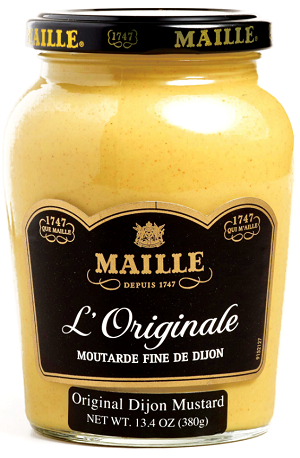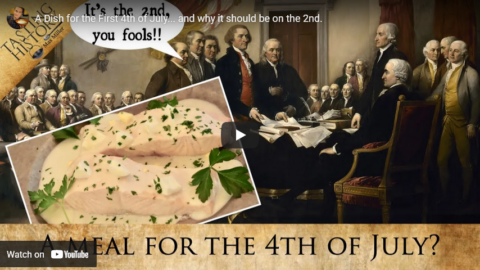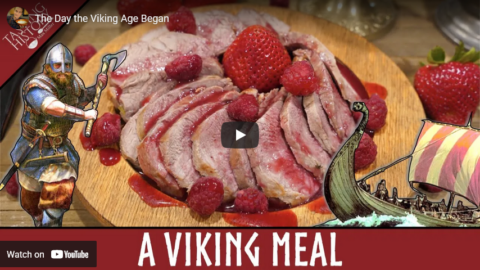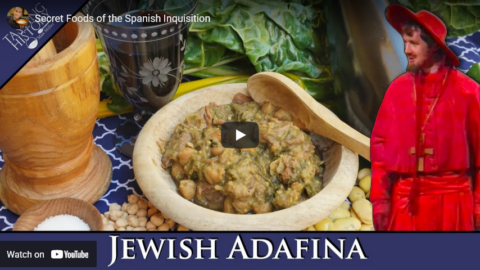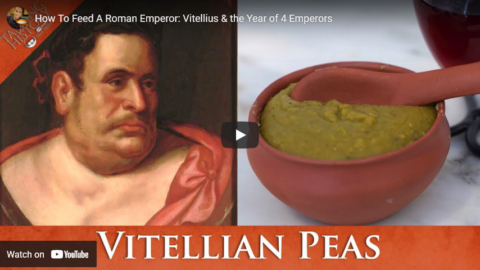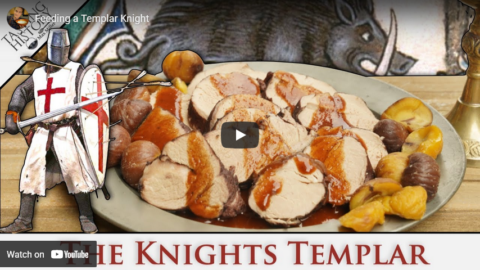Tasting History with Max Miller
Published 29 Jun 2021
(more…)
August 24, 2022
A History of Ice Cream | A Recipe from 1789
August 10, 2022
Coca de Sant Joan & the Fires of Saint John’s Eve
Tasting History with Max Miller
Published 22 Jun 2021
(more…)
August 7, 2022
You will own nothing … and we don’t care if you like it or not, prole
David Solway, reposted at Brian Peckford’s site, gives us a glimpse of the future the Davos crowd want for all us lesser beings:
The much-circulated slogan “You will own nothing, and you will be happy” was coined by Danish MP Ida Auken in 2016 and included in a 2016 essay published by the purveyors of the so-called “Great Reset” at the World Economic Forum (WEF) headquartered in Davos, Switzerland. It is, of course, only half true. Nonetheless, the phrase is certainly apt and should be taken seriously. For once the Great Reset has been put in place, we will indeed own nothing except our compelled compliance.
The world’s farmers and cattle raisers, deprived of their livelihoods on the pretext of reducing nitrogenic fertilizers and livestock-produced methane, will own next to nothing. Meat and grain will become increasingly rare and we will be dining on cricket goulash and mealworm mash, an entomorphagic feast. We will be driving distance-limited electric vehicles rented from the local Commissariat and digitally monitored by Cyber Central — assuming we will still be allowed to drive. Overseen by a cadre of empowered financial managers who can “freeze” our assets at any time, we will possess bank accounts and credit ratings, but they will not be really ours.
Subject to a conceptual misnomer that is nothing but a vacuous abstraction, we will have become “stakeholders” — the WEF’s Klaus Schwab’s favorite word — with no real stake to hold apart from a crutch. In fact, what Schwab’s “stakeholder capitalism” really means, as Andrew Stuttaford explains at Capital Matters, is “transferring the power that capitalism should confer from its owners and into the hands of those who administer it.”
Should the Great Reset ever be fully implemented, we will have been diminished, as Joel Kotkin cogently argues in The Coming of Neo-Feudalism, to the condition of medieval serfs, or reduced to the status of febrile invalids, like those in Thomas Mann’s The Magic Mountain, which, as it happens, was also set in Davos. As Mann ends his novel, addressing his main character Hans Castorp: “Farewell, Hans … Your chances are not good. The wicked dance in which you are caught up will last many a little sinful year yet, and we will not wager much that you will come out whole.”
Modern-day Castorps, we will indeed own nothing, and most assuredly, we will not be happy. As Schwab writes in his co-authored Covid-19: The Great Reset, people will have to accept “limited consumption”, “responsible eating”, and, on the whole, sacrificing “what we do not need” — this latter to be determined by our betters.
What strikes me with considerable force is the pervasive indifference or cultivated ignorance of the general population respecting what the Davos cabal has in store for them. A substantial number of people have never heard of it. Others regard it as just another internet conspiracy — though it is not so much a conspiracy since it is being organized in full sight. The majority of “fact-checkers” and hireling intellectuals wave it away as a right-wing delusion.
Making an International Standard Cup of Tea
Tom Scott
Published 9 Apr 2018As far as I can find, no-one has actually made a International Standard Cup of Tea — ISO 3103 or BS 6008 — for the internet before. Lots of people have talked about it, but that’s easy. Making one? That requires precision … and some specialist equipment.
You can buy a professional tea tasting set from this Amazon UK affiliate link: https://amzn.to/2qfbxyr
Thanks to Morag Hickman for letting me borrow her workshop for last-minute filming! She makes beautiful jewellery, like ring-keepers, dragon necklaces and rings that looks like ocean waves: https://etsy.com/shop/Errant
Update: someone has found an earlier ISO cup of tea on the internet, as part of a German video on tea tasting: https://www.youtube.com/watch?v=utwwk…
(more…)
July 28, 2022
The History of American Chip Flavors
J.J. McCullough
Published 2 Apr 2022The story of chips is the story of America.
(more…)
July 5, 2022
Dijon mustard … made from Canadian and Ukrainian mustard seeds
In the New English Review, Theodore Dalrymple explains why Europeans have been experiencing higher shelf prices and shortages for Dijon mustard recently, over and above the ordinary supply chain disruptions of the pandemic years we’ve all had to get used to:
Among myriad smaller consequences of that war is an acute mustard shortage in France. Mustard has all but disappeared from supermarket shelves, having first increased in price dramatically. This has surprised everyone who lazily assumed that Dijon mustard came from Dijon. Why should a war waged in Ukraine lead to the disappearance of mustard throughout France? After all, the famous brands, familiar to everyone, proudly announce on their labels that they are Dijon mustard. Can there be anything more French than Dijon mustard?
Perhaps the mustard is elaborated in Dijon, but the mustard seed, it turns out to everyone’s surprise, is imported from Canada and Ukraine. Apparently, Canada has seen a disastrous harvest of mustard seed, while there is no need to explain the shortage in Ukraine. Dijon mustard is about as local to Dijon as a modern soccer team is local to the city in which it has its stadium.
What is striking about this mustard crisis, unimportant except to those trying to make a proper vinaigrette or lapin à la moutarde, is its revelation of a perennial aspect of social psychology: namely, a resort to conspiracy theory. For some say that there is not really any mustard shortage at all — that mustard has disappeared from supermarket shelves because the supermarket chains are hoarding it, that they have a plentiful supply in their warehouses and will release it little by little, thereby profiteering by the resultant high prices. The war in Ukraine is only a pretext.
This is an old, indeed medieval, trope in times of shortage. There may well have been times, of course, when people really did hoard for the purposes of profiteering, but people rarely hoard something that is in abundant supply.
Yet many people require no evidence or proof to believe in the hoarding story. Does it not, after all, stand to reason? Do not merchants try to maximize their profits, and is hoarding not an easy way to do so? Practically all the mustard in France is sold in supermarkets — themselves a cartel that could easily agree to remove the product from the shelves. Surely no further evidence is needed.
July 4, 2022
A Dish for the First 4th of July … and why it should be on the 2nd
Tasting History with Max Miller
Published 30 Jun 2020While we may think of BBQ, hot dogs, and potato salad as traditional 4th of July fare, the Founding Fathers certainly did not. We’ll take a look at one of the earliest celebratory meals and explore why John Adams wasn’t a fan of July 4th.
Follow Tasting History with Max Miller here:
Instagram: https://www.instagram.com/tastinghist…
Twitter: https://twitter.com/TastingHistory1
Reddit: r/TastingHistoryHelp Support the Channel with Patreon: https://www.patreon.com/tastinghistory
LINKS TO INGREDIENTS & TOOLS**
Organic Nut Milk Bag: https://amzn.to/3i6D3sh
Wilton Candy Thermometer: https://amzn.to/3i0KkdbLINKS TO SOURCES**
1776 the Musical: https://amzn.to/3eDvXZX
John Adams by David McCullough: https://amzn.to/3i3SBNj
1776 by David McCullough: https://amzn.to/3i8cAKY
Townsends: Spanish Cooking – Salmon and Onions From 1750 https://www.youtube.com/watch?v=DjrGc…
The Martha Washington Cook Book: A Compendium of Cookery and Reliable Recipes: https://amzn.to/38dRwhz
Did you know… Independence Day Should Actually Be July 2nd?: https://www.archives.gov/press/press-…**Amazon offers a small commission on products sold through their affiliate links, so each purchase made from this link, whether this product or another, will help to support this channel with no additional cost to you.
MENTIONED LINKS
Everlasting Syllabub: https://www.youtube.com/watch?v=CQksG…Poached Salmon in Egg Sauce
ORIGINAL RECIPES (From The Martha Washington Cook Book)
EGG SAUCE
Make a drawn butter; chop two hard-boiled eggs quite fine, the white and yolk separately, and stir it into the sauce before serving. This is used for boiled fish or vegetables.TO MAKE DRAWN BUTTER
Put half a pint of milk in a perfectly clean stewpan, and set it over a moderate fire; put into a pint bowl a heaping tablespoonful of wheat flour, quarter of a pound of sweet butter, and a saltspoonful of salt; work these well together with the back of a spoon, then pour into it, stirring it all the time, half a pint of boiling water; when it is smooth, stir it into the boiling milk, let it simmer for five minutes or more, and it is done.Drawn butter made after this recipe will be found to be most excellent; it may be made less rich by using less butter.
Boiled Salmon
The middle slice of salmon is the best. Sew up neatly in a mosquito-net bag, and boil a quarter of an hour to the pound in hot, salted water. When done, unwrap with care, and lay upon a hot dish, taking care not to break it … Garnish with parsley and sliced eggs.MODERN RECIPE
INGREDIENTS
– 2 Hard Boiled Eggs, chopped into small pieces
– 1 Cup (240ml) of whole milk
– A heaping tablespoon of flour
– 1 Stick or 113g of softened butter
– ½ teaspoon salt
– 1 Cup of boiling water
– Salmon
– Salted WaterMETHOD
1. Add the milk to a sauce pan and set over medium heat and simmer making sure not to scorch it.
2. In a small bowl, add the flour, the butter, and the salt, and mix together. Slowly add the boiling water while continuing to stir. Once smooth, pour into the milk and allow to simmer for 5 minutes. Then stir in the chopped eggs and allow to simmer for another minute, then remove from the heat.
3. Fill a medium saucepan half full with water and add some salt (about 2 tsp). Set over low heat and bring to a simmer of 175-180°F/80°C. Place salmon into the water and cook until ready (12-15 per pound). Make sure not to let the temperature raise past the 180°F.
4. Once cooked, place salmon on a warm dish and pour the egg sauce on top. Garnish with parsley.PHOTO CREDITS
Richard Henry Lee: National Portrait Gallery / CC BY (https://creativecommons.org/licenses/…)MUSIC CREDITS
Record Scratch – Raccoonanimator https://freesound.org/s/160909/#tastinghistory #colonialcooking #4thOfJuly #IndependenceDay
June 22, 2022
The Day the Viking Age Began
Tasting History with Max Miller
Published 21 Jun 2022For 15% off your first order with Porter Road, click the link https://porterroad.com/MAXMILLER
VIKING BLOD MEAD: https://bit.ly/meadandmore
Support the Channel with PATREON ► https://www.patreon.com/tastinghistory
Merch ► https://crowdmade.com/collections/tas…
Instagram ► https://www.instagram.com/tastinghist…
Twitter ► https://twitter.com/TastingHistory1
Tiktok ► TastingHistory
Reddit ► https://www.reddit.com/r/TastingHistory/
Discord ► https://discord.gg/d7nbEpy
Amazon Wish List ► https://amzn.to/3i0mwGtSend mail to:
Tasting History
22647 Ventura Blvd, Suite 323
Los Angeles, CA 91364LINKS TO SOURCES**
An Early Meal by Daniel Serra & Hanna Tunberg: https://amzn.to/3MOJSNb
Anglo Saxon Chronicle: https://amzn.to/3tBBoCx
The Oxford History of the Vikings by Peter Sawyer: https://amzn.to/3zElwmlRECIPE
1 pound (½ kg) pork meat
Salt for seasoning
2 tablespoons (25g) Lard or another oil for cooking
1 ½ cups (125g) chopped spring onion, or leek
2 teaspoons brown mustard seeds, roughly crushed
1 teaspoon chopped mint
1 pound (½ kg) fresh berries
½ cup (120ml) water
½ cup (120ml) mead1. Season the meat, then heat the lard/oil in a pot on the stove. Sear the meat for 5-7 minutes until well browned. Then remove it and set aside.
2. Add the onion to the pot and cook for 2-3 minutes, then add the water and mead and bring to a simmer. Add the mustard seed and mint and return the pork to the pot. Return to a simmer then cover the pot and place it in an oven at 325°F/160°C for 15-25 minutes or until the pork reaches 145°F. Then remove the pot from the oven and remove the pork to let it rest.
3. Add the berries into the pot with the braising liquid and cook on the stove for 7-10 minutes or until very soft. Mash the berries, then pour everything through a strainer. Return the liquid to the pot and simmer for several minutes or until the sauce reduces down. The sauce will not become too thick without the addition of starch (optional).
4. Slice the pork and serve with the sauce, extra berries, and mint.
**Some of the links and other products that appear on this video are from companies which Tasting History will earn an affiliate commission or referral bonus. Each purchase made from these links will help to support this channel with no additional cost to you. The content in this video is accurate as of the posting date. Some of the offers mentioned may no longer be available.
Subtitles: Jose Mendoza | IG @worldagainstjose
PHOTO
Lindisfarne Priory: Mstanyauk, CC BY-SA 3.0 https://creativecommons.org/licenses/…, via Wikimedia Commons
Disneyland: Sean MacEntee via Flickr, CC BY-SA 3.0 https://creativecommons.org/licenses/…, via Wikimedia Commons
France Relics: Dennis Jarvis via Flickr, CC BY-SA 3.0 https://creativecommons.org/licenses/…, via Wikimedia Commons
Holy Island Sunrise (again): By Chris Combe from York, UK – CC BY 2.0, https://commons.wikimedia.org/w/index…
Viking Age Map: By en:User:Bogdangiusca – Earth map by NASA; Data based on w:File:Viking Age.png (now: File:Vikingen tijd.png), which is in turn based on http://home.online.no/~anlun/tipi/vro… and other maps., CC BY-SA 3.0, https://creativecommons.org/licenses/…” rel=”noopener” target=”_blank”>https://commons.wikimedia.org/w/index…
Lindisfarne Priory Ruins: Nilfanion, CC BY-SA 3.0 https://creativecommons.org/licenses/…, via Wikimedia Commons
Statue of Rollo: By Delusion23 – Own work, CC BY-SA 4.0, https://commons.wikimedia.org/w/index…MUSIC
Battle of the Creek by Alexander Nakarada (www.serpentsoundstudios.com)
Licensed under Creative Commons BY Attribution 4.0 License
http://creativecommons.org/licenses/b…#tastinghistory #viking
June 16, 2022
Secret Foods of the Spanish Inquisition
Tasting History with Max Miller
Published 15 Feb 2022Support the Channel with Patreon ► https://www.patreon.com/tastinghistory
Merch ► crowdmade.com/collections/tastinghistory
Instagram ► https://www.instagram.com/tastinghist…
Twitter ► https://twitter.com/TastingHistory1
Tiktok ► TastingHistory
Reddit ► r/TastingHistory
Discord ► https://discord.gg/d7nbEpy
Amazon Wish List ► https://amzn.to/3i0mwGt
Send mail to:
Tasting History
PO Box 766
Burbank, CA 91503LINKS TO SOURCES**
A Drizzle of Honey by David M. Gitlitz and Linda Kay Davidson: https://amzn.to/3gyf0CY
The Spanish Inquisition by Henry Kamen: https://amzn.to/3B9EbVXRECIPE
1 cup (160g) dried fava beans
1 cup (180g) dried chickpeas
2 1/2 lbs or 1kg beef
¼ cup (60ml) Olive oil
1 tablespoon salt
1 large onion diced
1 quart (1L) beef broth or water
2 teaspoon ground coriander
1 1/2 tsp ground cumin
2 teaspoon ground caraway
2 teaspoon fresh ground pepper
2 Eggplant, peeled and chopped
A large handful of chard leaves1. Coat the eggplant in salt, cover, and set aside for several hours.
2. Boil the fava beans and chickpeas in a large pot for 2 minutes, then drain and set aside. In the same pot, heat half of the olive oil over medium heat then, add the onions and half of the salt and cook until lightly brown, about 8 minutes. Remove the onions and add the beef to the empty pot with the rest of the oil and salt. Cook until lightly brown, about 5 minutes. Add the onions back in as well as the beef broth/water. Bring to a simmer and cover, letting the stew simmer for 1 hour.
3. Drain and rinse the eggplant, then add it into the pot along with the fava bean, chickpeas, and spices. Cover and let cook for another 2 hours.
4. Chop the chard, then pound it flat with a rolling pin, and add it into the pot. Set the pot into the oven at 200°F and cook overnight (or at least 6 hours). Alternately, you can transfer the adafina to a slow cooker overnight. Serve alone or over rice.**Some of the links and other products that appear on this video are from companies which Tasting History will earn an affiliate commission or referral bonus. Each purchase made from these links will help to support this channel with no additional cost to you. The content in this video is accurate as of the posting date. Some of the offers mentioned may no longer be available.
Subtitles: Jose Mendoza | IG @ worldagainstjose
#tastinghistory #jewishcooking #spanishinquisition
June 10, 2022
Ancient Greek Olives – Gifts from A Goddess
Tasting History with Max Miller
Published 1 Jun 2021Help Support the Channel with Patreon: https://www.patreon.com/tastinghistory
Tasting History Merchandise: crowdmade.com/collections/tastinghistoryFollow Tasting History here:
Instagram: https://www.instagram.com/tastinghist…
Twitter: https://twitter.com/TastingHistory1
Tiktok: TastingHistory
Reddit: r/TastingHistory
Discord: https://discord.gg/d7nbEpyTasting History’s Amazon Wish List: https://amzn.to/3i0mwGt
LINKS TO INGREDIENTS & EQUIPMENT**
Sony Alpha 7C Camera: https://amzn.to/2MQbNTK
Sigma 24-70mm f/2.8 Lens: https://amzn.to/35tjyoW
Dried Rue: https://amzn.to/3yErUqH
Terracotta Bowls with Spoons: https://amzn.to/3wLkEIbLINKS TO SOURCES**
De Agricultura by Cato the Elder: https://amzn.to/3bP20H6
De Re Rustica by Columella: https://amzn.to/3fkN99z
“Defense in the Matter of the Olive Stump” by Lysias
Varro the Agronomist: https://amzn.to/3fkhG7l
Aristotle’s Politics: https://amzn.to/3vkHMNj**Some of the links and other products that appear on this video are from companies which Tasting History will earn an affiliate commission or referral bonus. Each purchase made from these links will help to support this channel with no additional cost to you. The content in this video is accurate as of the posting date. Some of the offers mentioned may no longer be available.
Subtitles: Jose Mendoza
PHOTO CREDITS
Trapitum: Carole Raddato from FRANKFURT, Germany, CC BY-SA 2.0 https://creativecommons.org/licenses/…, via Wikimedia Commons
Akhenaten, Nefertiti and their children: By Neoclassicism Enthusiast – Own work, CC BY-SA 4.0, https://commons.wikimedia.org/w/index…
Amphora with Palm Trees: By Sharon Mollerus – Amphora with Palm Trees, Mycenaean, 15th century BC., CC BY 2.0, https://commons.wikimedia.org/w/index…
Procession fresco from Knossos: By ArchaiOptix – Own work, CC BY-SA 4.0, https://commons.wikimedia.org/w/index…
The Olive tree of Vouves: By Eric Nagle – https://www.reddit.com/r/europe/comme…, CC BY-SA 4.0, https://commons.wikimedia.org/w/index…
Reconstruction of the palace at Knossos: By Mmoyaq – Own work, CC BY-SA 3.0, https://commons.wikimedia.org/w/index…
The soldiers of Xerxes I: By A.Davey – This file has been extracted from another file: Xerxes detail ethnicities.jpg, CC BY 2.0, https://commons.wikimedia.org/w/index…
Lysias: By Coyau / Wikimedia Commons, CC BY-SA 3.0, https://commons.wikimedia.org/w/index…
Bouleuterion: By Zigomar – Own work, CC BY-SA 3.0, https://commons.wikimedia.org/w/index…#tastinghistory #olives #ancientgreece
June 4, 2022
Cheese propaganda, 1940 | Archive Film Favourites
Imperial War Museums
Published 14 May 2022With rationing introduced early in 1940 in Britain, this public information film was created to advocate the advantages of eating cheese over meat. The film explains not only the health benefits of cheese with some (unverified) experiments, but also its versatility in cooking, from grilled cheese to califlower cheese, “a meal in itself.” Film curator Matt Lee introduces us to this brilliant cheese propaganda.
You can watch the full Choose Cheese film on IWM’s Film Archive: https://film.iwmcollections.org.uk/re…
Subscribe to our channel for more films from the archives every Thursday!Browse the full IWM film collection and find out more about licencing this film or many others: https://bit.ly/iwmfilms
While our doors are temporarily closed, we still have millions of unforgettable stories to share with you. Your support is invaluable to help ensure we can share them with generations to come – please consider supporting Imperial War Museums today. Support us: https://www.iwm.org.uk/support-us/don…
Follow IWM on social media:
Twitter: https://twitter.com/I_W_M
Instagram: https://www.instagram.com/imperialwar…
May 27, 2022
How To Feed A Roman Emperor: Vitellius & the Year of 4 Emperors
Tasting History with Max Miller
Published 20 Apr 2021Help Support the Channel with Patreon: https://www.patreon.com/tastinghistory
Tasting History Merchandise: crowdmade.com/collections/tastinghistoryFollow Tasting History here:
Instagram: https://www.instagram.com/tastinghist…
Twitter: https://twitter.com/TastingHistory1
Tiktok: TastingHistory
Reddit: r/TastingHistory
Discord: https://discord.gg/d7nbEpyTasting History’s Amazon Wish List: https://amzn.to/3i0mwGt
LINKS TO INGREDIENTS & EQUIPMENT**
Sony Alpha 7C Camera: https://amzn.to/2MQbNTK
Sigma 24-70mm f/2.8 Lens: https://amzn.to/35tjyoW
Garum: https://amzn.to/3dMXnO0
Dried Marrowfat Peas: https://amzn.to/2RhIqfa
Lovage: https://amzn.to/3saQyea
Dried Ginger Root: https://amzn.to/3uFCHymLINKS TO SOURCES**
Apicius, De Re Coquinaria (translated by Elisabeth Rosenbaum and Barbara Flower): https://amzn.to/3wLqA4A
The Twelve Caesars by Suetonius: https://amzn.to/3uDUt4W
69 AD The Year of Four Emperors by Gwyn Morgan: https://amzn.to/2RfsY39**Some of the links and other products that appear on this video are from companies which Tasting History will earn an affiliate commission or referral bonus. Each purchase made from these links will help to support this channel with no additional cost to you. The content in this video is accurate as of the posting date. Some of the offers mentioned may no longer be available.
Subtitles: Jose Mendoza
PHOTO CREDITS
De Re Coquinaria: By Bonho1962 – Own work, CC BY-SA 3.0, https://commons.wikimedia.org/w/index…
Tiberius: By Carole Raddato from FRANKFURT, Germany – Tiberius, Romisch-Germanisches Museum, CologneUploaded by Marcus Cyron, CC BY-SA 2.0, https://commons.wikimedia.org/w/index…
Caligula: By Tomk2ski – Own work, CC BY-SA 4.0, https://commons.wikimedia.org/w/index…
Vomitorium: By Przemek P – https://szarada.net/okreslenie-z-krzy…, CC BY-SA 3.0, https://commons.wikimedia.org/w/index…
Amphitheatre Spectacle: Dennis Jarvis, CC BY-SA 2.0 https://creativecommons.org/licenses/…, via Wikimedia Commons
Vespasian: By Sailko – Own work, CC BY 3.0, https://commons.wikimedia.org/w/index…
Close up of the coin hoard: By Portable Antiquities Scheme from London, England – Close up of the coin hoard, CC BY-SA 2.0, https://commons.wikimedia.org/w/index…#tastinghistory #ancientrome #totalwar
May 20, 2022
The Cold War Legend That Delivered SAUSAGES To Tanks | Forces TV
Forces News
Published 26 Apr 2018To British troops based in north Germany in the last two decades of the Cold War, he was a legend. But this was no commando or member of the special forces.
Check out our website: http://forces.net
Twitter: https://twitter.com/ForcesNews
May 19, 2022
Feeding a Templar Knight
Tasting History with Max Miller
Published 25 Jan 2022Support the Channel with Patreon ► https://www.patreon.com/tastinghistory
Merch ► crowdmade.com/collections/tastinghistory
Instagram ► https://www.instagram.com/tastinghist…
Twitter ► https://twitter.com/TastingHistory1
Tiktok ► TastingHistory
Reddit ► r/TastingHistory
Discord ► https://discord.gg/d7nbEpy
Amazon Wish List ► https://amzn.to/3i0mwGtSend mail to:
Tasting History
PO Box 766
Burbank, CA 91503Recipe
Boar Tenderloin
Equal parts wine and water for boiling
1 thick slice of bread without crust
1 ¼ cups white wine
¼ cup red wine
1 teaspoon ginger
2 teaspoon cinnamon
½ teaspoon nutmeg
Pinch of saffron threads
2 tablespoons brown sugar
Pinch of salt
1 tablespoon red wine vinegar (optional)1. Heat olive oil in a pot then sear the boar on all sides. Remove it from the pot and boil equal parts wine and water, then add the boar back in and boil, covered, for 10-15 minutes or until fully cooked. Then let it rest.
2. To make the sauce, mix the spices and white wine. Separately, soak the bread in water for a few hours, then pour in the red wine. Strain the bread/wine into a saucepan, then press the bread through the strainer. Add the spiced wine mixture and bring to a simmer. Let simmer for 15 minutes, or until half reduced, then add the sugar and salt, and if you with, a tablespoon of red wine vinegar. Simmer until thickened.
3. Slice the boar and pour the sauce over it. Serve with roasted chestnuts.LINKS TO SOURCES**
Le Viandier de Taillevent: https://amzn.to/3FWD7FS
Le Ménagier de Paris: https://amzn.to/3fKgyt0
The Primitive Rule of the Templars by Bernard de Clairvaux: https://amzn.to/3ItxiRY
The Templars by Dan Jones: https://amzn.to/3qOIlin**Some of the links and other products that appear on this video are from companies which Tasting History will earn an affiliate commission or referral bonus. Each purchase made from these links will help to support this channel with no additional cost to you. The content in this video is accurate as of the posting date. Some of the offers mentioned may no longer be available.
Subtitles: Jose Mendoza | IG @worldagainstjose
Music: Crusade – Video Classica by Kevin MacLeod is licensed under a Creative Commons Attribution 4.0 license. https://creativecommons.org/licenses/…
Source: http://incompetech.com/music/royalty-…
Artist: http://incompetech.com/#tastinghistory #knightstemplar
From the comments:
Tasting History with Max Miller
3 days ago
Templar should be pronounced TEM-pler, but sometimes I say tem-PLAR when I read it. Don’t do what I do
May 9, 2022
QotD: Mayonnaise
All Carolina folk are crazy for mayonnaise, mayonnaise is as ambrosia to them, the food of their tarheeled gods. Mayonnaise comforts them, causes the vowels to slide more musically along their slow tongues, appeasing their grease-conditioned taste buds while transporting those buds to a place higher than lard could ever hope to fly. Yellow as summer sunlight, soft as young thighs, smooth as a Baptist preacher’s rant, falsely innocent as a magician’s handkerchief, mayonnaise will cloak a lettuce leaf, some shreds of cabbage, a few hunks of cold potato in the simplest splendor, restyling their dull character, making them lively and attractive again, granting them the capacity to delight the gullet if not the heart. Fried oysters, leftover roast, peanut butter: rare are the rations that fail to become instantly more scintillating from contact with this inanimate seductress, this goopy glory-monger, this alchemist in a jar.
The mystery of mayonnaise — and others besides Dickie Goldwire have surely puzzled over this — is how egg yolks, vegetable oil, vinegar (wine’s angry brother), salt, sugar (earth’s primal grain-energy), lemon juice, water, and, naturally, a pinch of the ol’ calcium disodium EDTA could be combined in such a way as to produce a condiment so versatile, satisfying, and outright majestic that mustard, ketchup, and their ilk must bow down before it (though, at two bucks a jar, mayonnaise certainly doesn’t put on airs) or else slink away in disgrace. Who but the French could have wrought this gastronomic miracle? Mayonnaise is France’s gift to the New World’s muddled palate, a boon that combines humanity’s ancient instinctive craving for the cellular warmth of pure fat with the modern, romantic fondness for complex flavors: mayo (as the lazy call it) may appear mild and prosaic, but behind its creamy veil it fairly seethes with tangy disposition. Cholesterol aside, it projects the luster that we astro-orphans have identified with well-being ever since we fell from the stars.
Tom Robbins, Villa Incognito, 2004.


